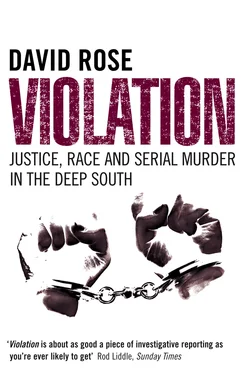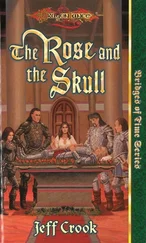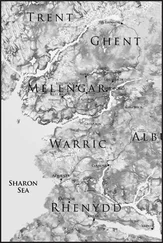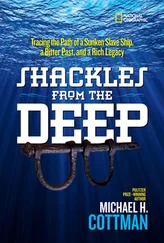A few weeks later, Barbara Andrews, the estranged wife of Jesse Rawling, a black man from Columbus, informed the police of her belief that her husband was the killer. One thing she mentioned made the task force take her seriously: Rawling, she said, told her that one of the victims had had breast cancer. This was true: Jean Dimenstein had had a mastectomy, although this fact had not been made public.
Like the strangler, Hinson and Rawling had O-type blood. Initial tests indicated that Hinson’s pubic hairs were very like the strangler’s. But both men had to be ruled out, because they were O secretors.
After that, new leads in the case became rather sparse. The police tried opening what they called a ‘rumour center’, a telephone hotline for people who wanted to pass on confidential tips. Hardly anyone called. Taking office in 1982, the new CPD chief, Jim Wetherington, pledged that solving the case remained a high priority. But until the day two years later that Michael Sellers took his mysterious phone call, there was no real progress. For the moment we must leave the question of whether the Almighty really had something to do with it to one side. But if He did, He chose a human being called Henry Sanderson to be His messenger.
In 1977, the autumn of the stranglings, Sanderson was living near Dadeville, Alabama, where he owned and ran a store. On 7 October he and his wife came to Columbus for a family party, and spent the night at the house shared by Sanderson’s octogenarian mother, Nellie Sanderson, and her elder sister, Callye J. East. It lay on Eberhart Avenue, in the heart of Wynnton, a short walk from the homes where Ferne Jackson and Jean Dimenstein had recently been murdered. Late that night, the house was burgled.
The intruder first tried and failed to get in through Nellie Sanderson’s bedroom window, and then succeeded via the kitchen. But the room he entered next contained not a vulnerable old woman, but the sleeping figures of Mr Sanderson and his wife. Before departing, the burglar removed Sanderson’s trousers from the chair by his bed. Next morning, Sanderson said later, ‘I got up and started to put my pants on and couldn’t find them.’ His wallet, which contained his banking cards and $60 in cash, had been in a pocket, together with the keys to his Toyota car, which was missing from the place he’d parked it outside. A few days later the police found the car, abandoned. The thief had gone through the glove compartment, removing some gasoline credit cards and Henry Sanderson’s weapon – a blue-steel .22 Ruger automatic.
Nine months later, in July 1978, the then-CPD chief Curtis McClung addressed a press conference about the Ruger. There was, he admitted, ‘absolutely no evidence that the strangler committed this particular burglary’. He had never used a gun against any of his victims, and the Eberhart Avenue intruder left no fingerprints or other physical clues. But the burglary had been in Wynnton, and just possibly, McClung said, it had been the strangler’s work: ‘We are asking for the public’s help in this matter because the gun could not be recovered through the normal investigative process.’
Back then, Detective Sellers had been assigned to the pawnshop detail – a long way down the police hierarchy from investigating serial murder. By 1984 he had been promoted to sergeant, and had made the robbery-homicide division, the CPD’s elite.
‘I’d made a promise,’ Sellers told me portentously. ‘I was in the mall one day, at J.C. Penney, and I ran into Cindy Scheible. I knew her from school, and [the strangler’s third victim] Florence Scheible was her grandma. It must have been four or five years after her death. I said to her, “Cindy, someone killed your grandmother, and I am going to find him.” After I’d cleared it [solved the case] I saw her again and she reminded me: “You said you’d find him, and you did.”’
Meanwhile, Henry Sanderson had moved to Allen, a suburb of Dallas, Texas. But on the morning of 15 March 1984, Sellers told me, Sanderson dialled the CPD number and spoke to him. ‘He calls and he says, “I’ve been looking for a .22 Ruger,”’ Sellers said. ‘He said the reason he was calling us was someone had phoned him from the Police Department and left a message that said we had the gun.’
Sellers took down the serial number and told Sanderson he’d look into it. Under normal circumstances, he might not have been interested, but Ruger automatics were big news in Columbus that week in 1984. Four days earlier, a police officer, Charles Bowen, had been shot twice in the face and killed by a robber armed with a Ruger after a car chase. Sellers discussed the phone call with Charlie Rowe, a detective colleague who’d been on the stranglings task force. When he mentioned the weapon, Rowe said later, ‘something clicked’. He told Sellers: ‘That’s the gun stolen at Callye East’s house.’ Sellers quickly discovered two things. The first was that no one at the CPD seemed to know anything about the gun’s current whereabouts. The second was that none of his colleagues had called and left a message for Henry Sanderson.
Конец ознакомительного фрагмента.
Текст предоставлен ООО «ЛитРес».
Прочитайте эту книгу целиком, купив полную легальную версию на ЛитРес.
Безопасно оплатить книгу можно банковской картой Visa, MasterCard, Maestro, со счета мобильного телефона, с платежного терминала, в салоне МТС или Связной, через PayPal, WebMoney, Яндекс.Деньги, QIWI Кошелек, бонусными картами или другим удобным Вам способом.












